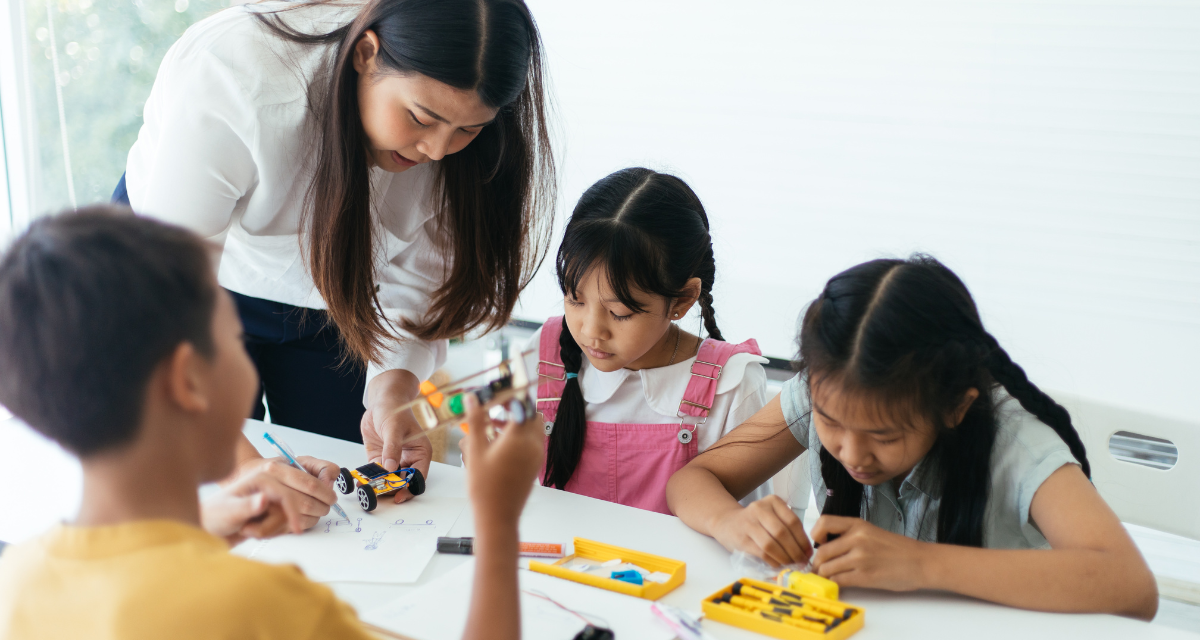
8 Study Tips for Kinesthetic Learners
Is your child constantly moving, fidgeting during study sessions, or pacing around when tackling homework? They might be a kinesthetic learner. Kinesthetic learners are a unique group of students who absorb information best through physical movement and hands-on experiences. As a parent, it can be challenging to support your kinesthetic learner’s academic journey. That’s why we’re here to help. At iAchieve Learning, we understand the struggles that kinesthetic learners face, and we have compiled a list of 8 study tips tailored to their needs. These strategies will help your child maximize their learning potential and succeed in their studies.
How do you know if you’re a kinesthetic learner?
Before diving into the study tips, it’s essential to understand the characteristics of a kinesthetic learner. Here are some indicators that your child may be one:
They fidget a lot.
Kinesthetic learners tend to be in constant motion. They might tap their fingers, bounce their legs, or twirl their hair while studying. This physical restlessness is a sign that they learn best through movement.
They think best when they are exercising.
Kinesthetic learners often find they have their brightest ideas or solve complex problems while engaging in physical activities. Exercise gets their creative juices flowing and helps them think more clearly.
They are well-coordinated.
Many kinesthetic learners have good hand-eye coordination, which means they excel at activities that require precise physical movements, such as drawing, sculpting, or playing musical instruments.
They find themselves pacing when studying.
If your child has a habit of pacing around the room while studying, it’s a strong indication that they are a kinesthetic learner. This movement may help them process information and maintain focus.
They may have a short attention span and be distracted easily.
Kinesthetic learners often struggle with long periods of sitting still and may become easily distracted. They require frequent breaks and physical activities to maintain their concentration.
Now that you have a better understanding of kinesthetic learners let’s explore the study tips that can help your child succeed.
8 Study Tips for Kinesthetic Learners
- Work/Study Standing Up
Sitting at a desk for long periods can be excruciating for kinesthetic learners. Encourage your child to stand up while studying. You can set up a standing desk or elevate their materials, allowing them to move around and engage their bodies while learning. This physical activity can help improve focus and retention, making studying more effective and enjoyable.
- Make and Use Flashcards
Flashcards are a valuable tool for kinesthetic learners. Creating flashcards involves writing, cutting, and shuffling, which engages your child’s hands and helps them internalize the information. Afterward, flipping through the cards and physically handling the material reinforces their memory. This interactive approach to studying can make a significant difference in retaining key concepts.
- Move and Listen to an Audio Training
Kinesthetic learners can benefit from combining physical activity with auditory learning. Encourage your child to listen to audio training, lectures, or podcasts while engaging in light physical exercises like stretching, jogging in place, or even bouncing on a stability ball. This multi-sensory approach allows them to absorb information effectively while staying physically active.
- Change Up Your Study Space
Kinesthetic learners may quickly become restless when studying in the same environment for too long. To combat this restlessness, help your child create various study spaces. Whether it’s a quiet corner of the living room, the backyard, or even a local park, switching locations can provide a refreshing change of scenery and help maintain focus.
- Take Frequent Breaks
Short attention spans and easily getting distracted are common traits of kinesthetic learners. To work with these tendencies, encourage your child to take frequent breaks during study sessions. These breaks can involve short physical activities like jumping jacks, stretching, or walking. Not only will this help maintain their concentration, but it will also improve overall learning and retention.
- Teach the Material Back to Someone
One effective way to reinforce learning is by having your child teach the material back to someone else. Encourage them to explain key concepts, equations, or theories to you or a study partner. Articulating their thoughts and demonstrating understanding through gestures and body movements can greatly enhance their grasp of the subject.
- Study in Groups
Group study sessions can be highly beneficial for kinesthetic learners. Studying with peers provides opportunities for interactive discussions and collaborative learning. Your child can engage in group activities that involve physical movement, such as reenacting historical events or performing science experiments together. These hands-on experiences not only make learning fun but also reinforce retention.
- Use Small Movements to Stay Focused
To maintain focus during study sessions, encourage your child to use small, subtle movements. Simple actions like tapping a foot, fidgeting with a small object, or squeezing a stress ball can help release pent-up energy without causing distraction. These small movements can enhance concentration and keep your kinesthetic learner engaged.
Understanding and supporting your kinesthetic learner is crucial for their academic success! These 8 study tips for kinesthetic learners provide practical strategies to help your child thrive in their studies. If you find that your child is still struggling or needs additional support, consider reaching out to iAchieve Learning. Our tutoring and academic coaching services are specifically tailored to address the needs of kinesthetic learners. We support your child’s educational journey and help them reach their full potential. Don’t hesitate to take action and provide your kinesthetic learners with the tools and support they need to succeed. Together, we can help them achieve their academic goals!
RELATED BLOG POSTS
The Secret to Helping Kids Succeed in School. Teaching Towards Their Learning Style!



